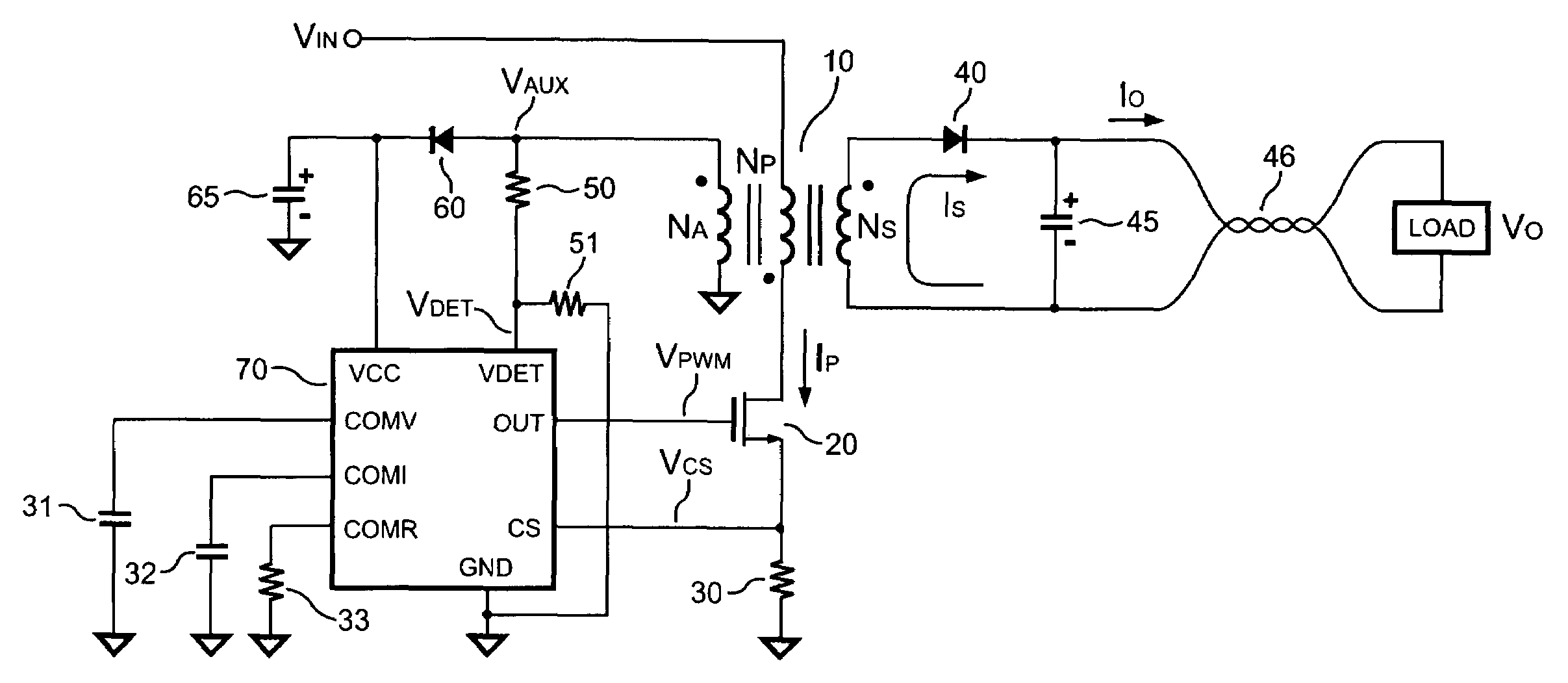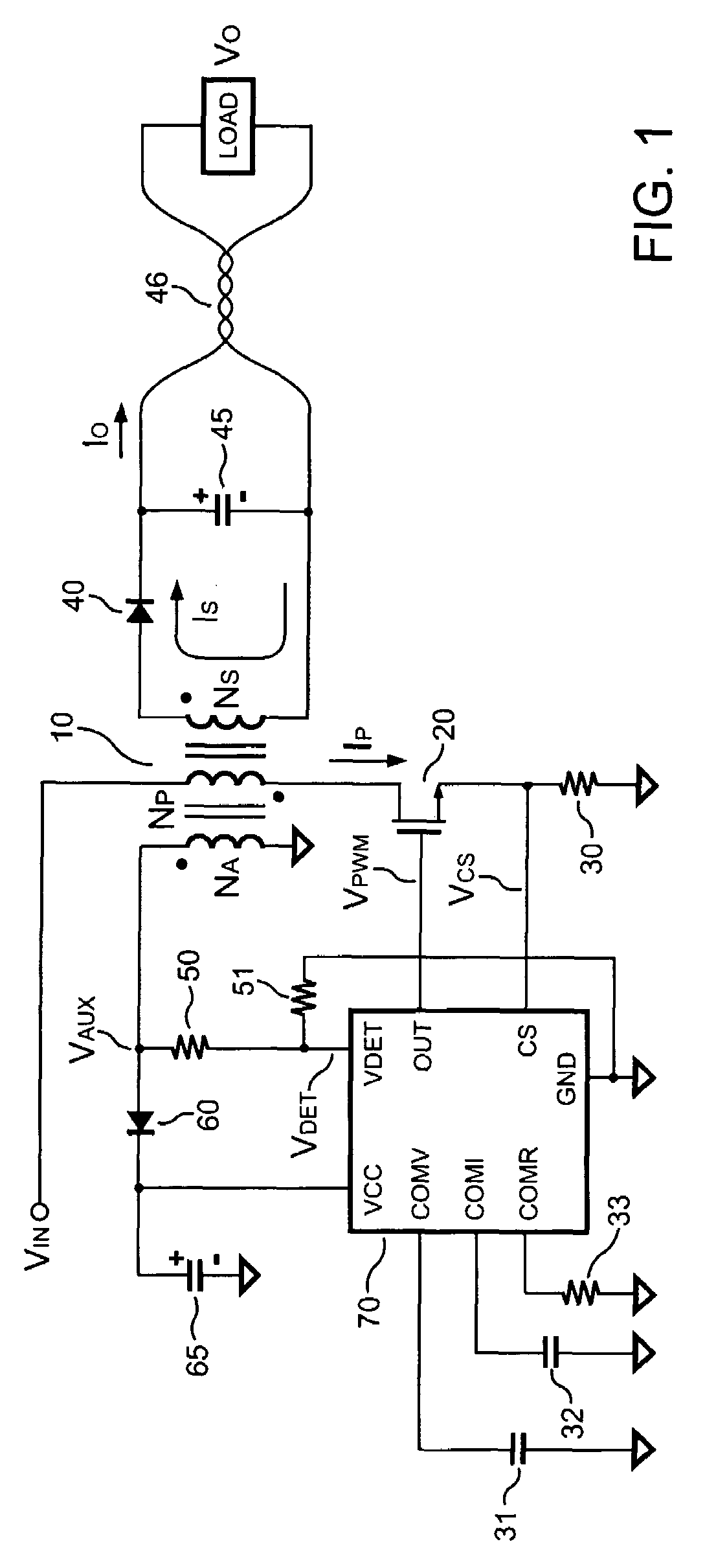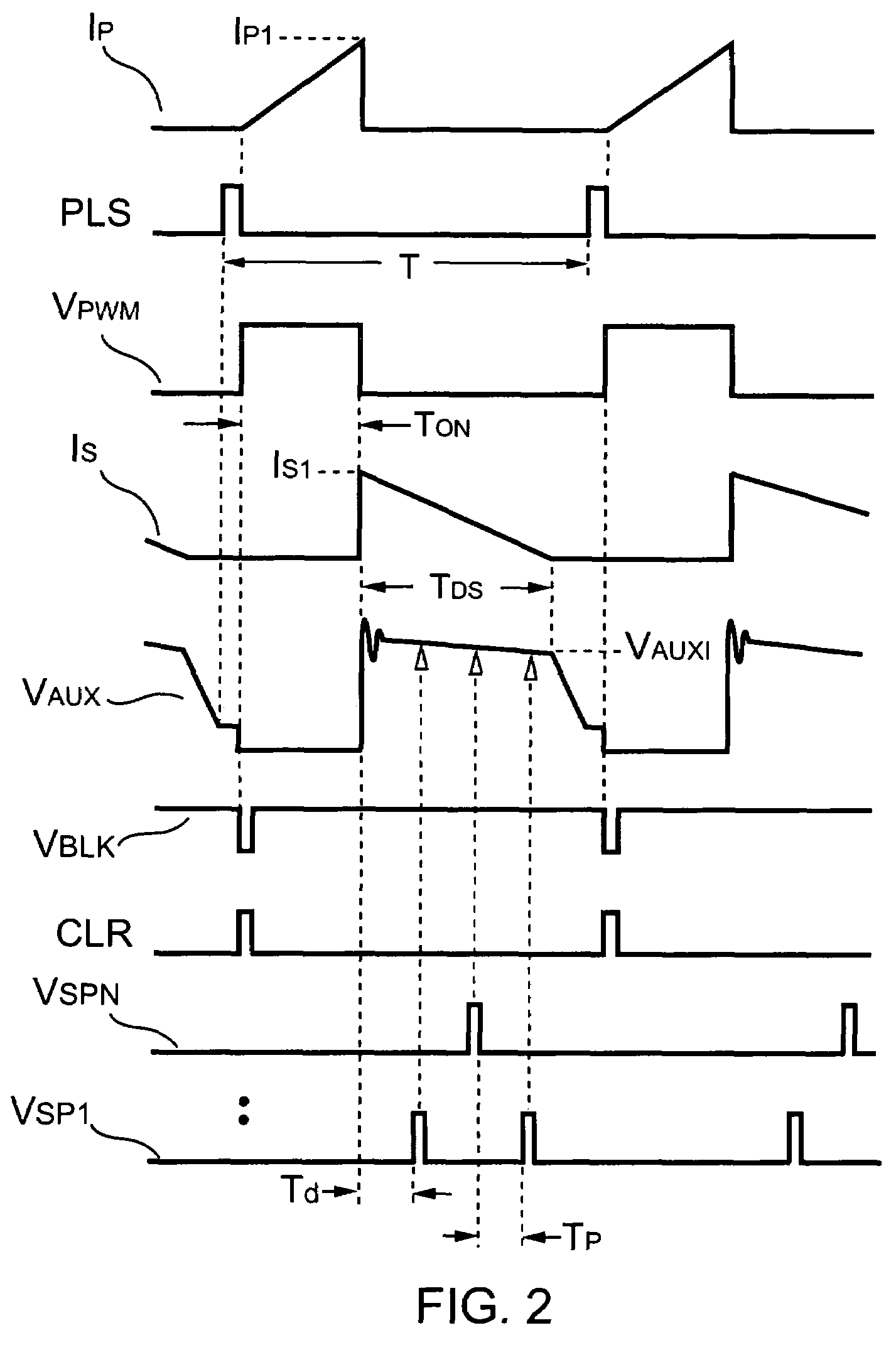Primary-side controlled switching regulator
a switching regulator and side-controlled technology, applied in the direction of power conversion systems, instruments, dc-dc conversion, etc., can solve the problems of inaccuracy of output voltage and output current control, and achieve the effect of improving load regulation
- Summary
- Abstract
- Description
- Claims
- Application Information
AI Technical Summary
Problems solved by technology
Method used
Image
Examples
Embodiment Construction
[0020]FIG. 1 illustrates a conventional primary-side controlled switching regulator. The switching regulator includes a transformer 10 having an auxiliary winding NA, a primary winding Np, and a secondary winding NS. To regulate an output voltage VO and an output current IO of the switching regulator, A switching signal VPWM is generated by a control circuit 70 to a transistor 20 for switching a transformer 10.
[0021]FIG. 2 illustrates a plurality of signal waveforms of the conventional switching regulator illustrated in FIG. 1. As the switching signal VPWM is a logic-high, a primary-side switching current IP shall be generated accordingly. A peak value IP1 of the primary-side switching current IP is given by:
[0022]IP1=VINLP×TON(1)
where VIN is an input voltage applied to the transformer 10, LP is the inductance of the primary winding NP of the transformer 10, and TON is an on-time of the switching signal VPWM.
[0023]Once the switching signal VPWM is dropped to a logic-low, the energ...
PUM
 Login to View More
Login to View More Abstract
Description
Claims
Application Information
 Login to View More
Login to View More - R&D
- Intellectual Property
- Life Sciences
- Materials
- Tech Scout
- Unparalleled Data Quality
- Higher Quality Content
- 60% Fewer Hallucinations
Browse by: Latest US Patents, China's latest patents, Technical Efficacy Thesaurus, Application Domain, Technology Topic, Popular Technical Reports.
© 2025 PatSnap. All rights reserved.Legal|Privacy policy|Modern Slavery Act Transparency Statement|Sitemap|About US| Contact US: help@patsnap.com



